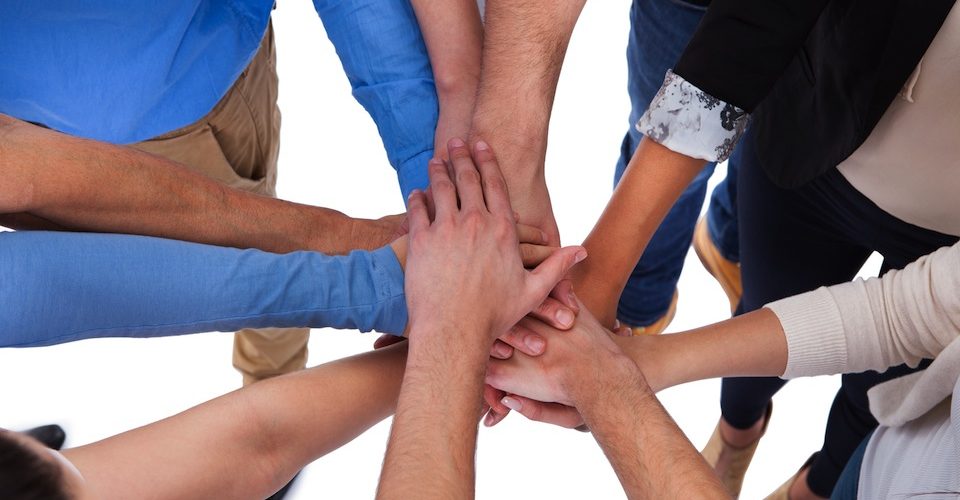One day in 2010, three leaders of environmental organizations – REEP Green Solutions, Sustainable Waterloo Region, and The Region of Waterloo – met to discuss an outstanding idea: to reduce greenhouse gas (GHG) emissions in Waterloo Region through local collaboration.
One day in 2010, three leaders of environmental organizations – REEP Green Solutions, Sustainable Waterloo Region, and The Region of Waterloo – met to discuss an outstanding idea: to reduce greenhouse gas (GHG) emissions in Waterloo Region through local collaboration. Fast forward four years and you’ll find ClimateActionWR, a thriving collaboration that developed a region-wide climate action plan supported by municipalities, non-profit and for-profit organizations as well as community members.
The idea is remarkable for two reasons. First, the three realized that local collaboration would be very successful and create the most impact. Second, they recognized that they never could have pulled off this particular project as individual organizations.
For many of us, collaboration seems counterintuitive as we live in a time of worshipping (and largely overpaying) those considered experts or leaders. We are socialized to believe that success is almost exclusively hinged on finding that one perfect leader or expert. I’m not saying that there is no need for strong leaders or experts, but that we may be relying on them too much.
I have suspected this for a while now and, as it turns out, I’m not the only one. James Surowiecki, author of The Wisdom of Crowds, convincingly explains why groups – under the right circumstances – will make better predictions and decisions than experts.
Evidence clearly demonstrates that diverse groups of people with varied knowledge about an issue are much more likely to make an accurate prediction or come up with a correct solution than experts on their own. Unfortunately, to anyone who has ventured into collaboration (willingly or not) it’s pretty clear that good collaboration, while potentially producing superior outcomes, is also hard work.
How to do collaboration right
Collaboration becomes particularly important in the context of complex problems. Global climate disruption may be the biggest such problem but there are many more (like loss of biodiversity and air, land and water pollution). Much has been written on the pursuit of effective collaboration over the past several decades. There are many models and frameworks available to those interested in bettering their collaboration skills – many are quite complex and extensive (including my own). Over the past 20 years, my professional work and my research on collaborations has taught me that there are 5 important components that need to be understood when doing collaborative work.
1. A shared vision
The first component is the importance for those involved to take sufficient time to create a shared vision (mind you, it is normal and expected that each organization has their own goals – but there needs to be a sufficient overlap among all partners). Merely assuming that groups coming together to collaborate have a shared vision can create unpleasant surprises in the long-term.
2. Interdependence
This is closely related to having a shared vision. Interdependence in collaboration means that each organization recognizes that they can only achieve their shared and their own goal through collaborating.
3. Trust and open communication
Good communication is vital to creating a positive working environment that allows for processes that will result in great collaborative solutions.
4. Independence
This component stands, to some degree, in contrast to the second and third components. It is vital for collaborations to have a diversity of voices present (skills, experiences and expertise) who are comfortable speaking up and challenging those ideas that may be group talk (ideas understood as truisms because they have always been seen as such). In good collaborations, diversity of voices creates tension and will require further investment in developing a sense of interdependence, trust and open communication.
5. A Backbone Organization
This is the structure that brings the groups together, mobilizes, coordinates, facilitates and in some cases provides leadership – but not expertise.
In all of this, intentionality through time, patience and trust in a process becomes increasingly central and often requires someone in a leadership position with strong facilitation and mediation skills.
The new superheroes of environmental collaboration
I love superheroes – they come and save the day. So I’d love for a new green superhero to show up and save the world from environmental degradation (I know we already have some – David Suzuki is certainly one). But there is nothing better than watching a bunch of superheroes coming together (see: the Avengers). Why? First, it’s just awesome – it’s like going to a party where all your friends show up, too. Second, and more importantly, together they can “fight the foes no single hero can withstand,” something those three leaders knew when they founded ClimateActionWR, together.
Felix Munger is using his knowledge about collaboration to help organizations extending their impact. He is a founding partner at the Sustainable Societies Consulting Group (www.sscg.org). SSCG is a social enterprise providing evaluation, knowledge mobilization & collaboration building for environmental & community sustainability and well-being. SSCG is currently assisting the Hochschule Bochum (University of Applied Sciences) in Germany in their collaborative process to become a sustainable university.













